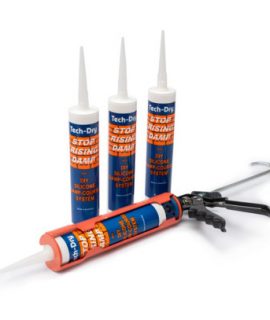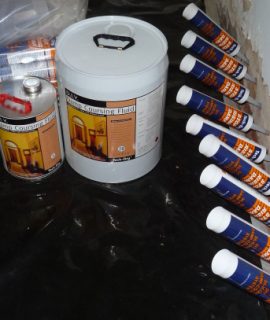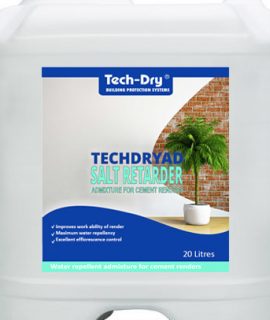RISING DAMP: An Overview

Damp Course Cream
Innovative water-based silicone cream for fixing rising damp.

Damp Course Fluid
Traditional solvent-based silicone solution for fixing rising damp.

Salt Retarder
Water andsalt resistant admixture for cement renders and mortars after damp-course treatment.
What is rising damp?
Rising damp is salty ground moisture that rises by capillary action up a brick or masonry structure e.g. wall or fireplace. Also known as “salt damp”.
What causes rising damp?
- no damp course is present in an existing brick or masonry structure;
- the original damp course in the brick or masonry wall has deteriorated;
- the damp course level is bridged by earth, concrete or other masonry.
Where does rising damp occur?
Rising damp occurs at the base of brick or masonry structures.
What does rising damp look like?
Internal walls
- peeling and/or bubbling paint work
- cracked and/or bubbling plaster work
- water tide mark
- efflorescence
- paint discolouration
- rotting timber skirting boards
External walls
- efflorescence
- water tide mark
- fretting brickwork
- crumbling mortar
How is rising damp treated?
The installation of a new damp course into an existing brick or masonry structure (at floor or ground level) stops rising damp.
What to do after rising damp treatment?
Internal rendered walls: allow to dry for a minimum 3 months before anyre-rendering/re-plastering.
External bare brick walls: allow to dry for a minimum 12 months, followed by salt removal, before any surface decoration.
Please note:
Mould is a product of poor room and/or sub-floor ventilation, and not due to rising damp. Increasing ventilation through opening doors and windows and installing sub-floor vents (pressed metal or cast iron) will alleviate this problem.
